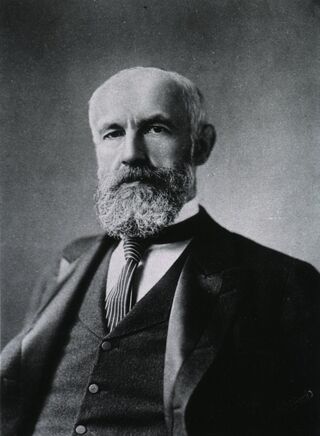Deception
What Is Pathological Lying?
New approaches help us spot a pathological liar.
Posted September 7, 2020 Reviewed by Lybi Ma

Co-authored by Dr. Drew Curtis
Everyone lies. Over a one-week span, about 95 percent of people report telling at least one lie. However, some people tell a lot more than one. Some people tell lies with such regularity that dishonesty comes to be seen as a defining characteristic of their personality. In our culture, we have various terms we use to describe these people such as habitual liar, compulsive liar, and chronic liar. But the term that is used most is pathological liar. For such a widely used term, there is remarkably little agreement about how the term pathological liar should be defined. If most people lie, when do we decide that it has become psychologically problematic? What is pathological lying?

Early Work on Pathological Liars
The first person to write about pathological lying was the first person to earn a Ph.D. in psychology in the United States, G. Stanley Hall. In 1890, Hall published an article about dishonesty in a group of 300 children he studied. In discussing the various types of lies that the children told, he mentioned that about 7 percent of them seem to exhibit pathological lying. He argued that some children would take on entirely fraudulent personas, often in seek of attention. Others would develop very sophisticated, tricks, cons, and lies. Hall went on to make the case that if these pathological liars were not treated promptly and drastically, the children would move into adulthood becoming imposters, charlatans, and adroit liars.
The term he used for this insane tendency to lie was pseudomania. He noted that while the lies may start off in the service goals such as attention, thrills, or material gain, pathological liars can, in a sense, lose themselves in their lies and begin to tell lies that offer no obvious incentives.
Across the Atlantic at the same time, another researcher was tackling the concept of pathological lying. The highly-regarded German psychiatrist, Anton Delbrück, worked at several insane asylums in Europe. He had a handful of patients who exhibited an unusual pattern of pervasive dishonesty. For instance, one was a woman who traveled through Austria and Switzerland using boastful and imaginative deception to convince people at various times that she was a Spanish royal, a Romanian princess, the affluent friend of a bishop, and an impoverished medical student. She was brought in for psychiatric evaluation after using a disguise to pass herself off as a man while attending an educational institution. Delbrück wrote about the woman and four other cases in a book he published in 1891. He described a condition he called pseudologia phantastica, which roughly translates to fantastical lying. Importantly, he, like Hall, noted that pathological liars do not always seem to have a tangible goal that their lies are tied to. Their lies often appear to spring forth without any perceptible motive.
Later, in 1915, Dr. William Healy and his wife Mary wrote an authoritative text on pathological lying. In it, they defined pathological lying as “falsification entirely disproportionate to any discernible end in view, may be extensive and very complicated, manifesting over a period of years or even a lifetime, in the absence of definite insanity, feeblemindedness or epilepsy.” Thus, their definition, which still holds sway today, seemed to hinge on four key diagnostic criteria: 1) excessive lying; 2) lying not obviously linked to motives; 3) long-term expression; and 4) not associated with other psychiatric illness. They acknowledge that pathological lying, pseudologia phantastica, and other terms such as mythomania were all synonyms for the same disorder.
Recent Work on Pathological Lying
Though pathological lying has been described in the literature for 130 years, it has not been broadly accepted as a diagnostic entity in mainstream psychiatry and psychology, nor has a widely agreed-upon definition been accepted. The American Psychiatric Association’s Diagnostic and Statistical Manual of Mental Disorders has never included pathological lying as a disorder, although it has, in the past, listed lying as a common feature of some disorders.
In the pathological lying literature, some have argued that pathological lying occurs without motive, while others have suggested that it is sometimes motivated by goals of status enhancement. Some have suggested that the lies must have a fantastical or dreamlike quality to them, while others seem to accept that pathological lies can be very realistic. Some stand by the requirement that pathological liars have no comorbid diagnosis, while others see no need for that provision.
What Is a Pathological Liar?
Recently, Dr. Drew Curtis began to argue that pathological lying, as had been described historically, was not defined in the manner that contemporary mental health professionals define disorders. Specifically, he noted that disorders are based on four criteria: 1) atypicality (they are statistically infrequent or violate norms); 2) maladaptive (they impair functioning); 3) suffering (they cause emotional distress); and 4) danger (they create risks of harm or loss for self or others). These criteria are used to determine which patterns of behaviors, thoughts, and feelings are simply part of the natural variability of the human experience and which are pathological.
In a paper we published earlier this year, we surveyed over 800 people about their lying. We managed to identify a small subset of people who we classified as pathological liars. They seemed to have a pattern of lying that fit the diagnostic criteria for a psychological disorder. Their lying 1) was atypical (they lied more than most); 2) was maladaptive (it caused trouble in the lives); 3) caused suffering; and 4) caused danger (their lying led to the risk of harm or loss for themselves and others). Additionally, we found that the majority of the pathological liars had grappled with their problematic dishonesty for over five years. The typical pathological liar told seven lies per day, whereas the people who were not pathological liars told about one lie per day.
A Definition of Pathological Lying
What is pathological lying? Based on our work, we were able to develop a formal definition. Pathological lying is a persistent, pervasive, and often compulsive pattern of excessive lying behavior that leads to clinically significant impairment of functioning in social, occupational, or other areas; causes marked distress; poses a risk to the self or others; and occurs for longer than six months.
We will expand considerably on the topic of pathological lying in an upcoming book we are publishing with the American Psychological Association.
Facebook image: GaudiLab/Shutterstock
References
Curtis, D. A., & Hart, C. L. (2020). Pathological Lying: Theoretical and empirical support for a diagnostic entity. Psychiatric Research and Clinical Practice. https://doi.org/10.1176/appi.prcp.20190046
Hall, G. S. (1890). Children's lies. The American Journal of Psychology, 3(1), 59-70. http://www.jstor.com/stable/1411497
Healy W., & Healy M. T. (1915). Pathological Lying, Accusation, and Swindling: A Study in Forensic Psychology (Criminal Science Monograph Series No. 1). Oxford, Little, Brown.
Serota, K. B., Levine, T. R., & Boster, F. J. (2010). The prevalence of lying in America: Three studies of self-reported lies. Human Communication Research, 36, 2–25.




